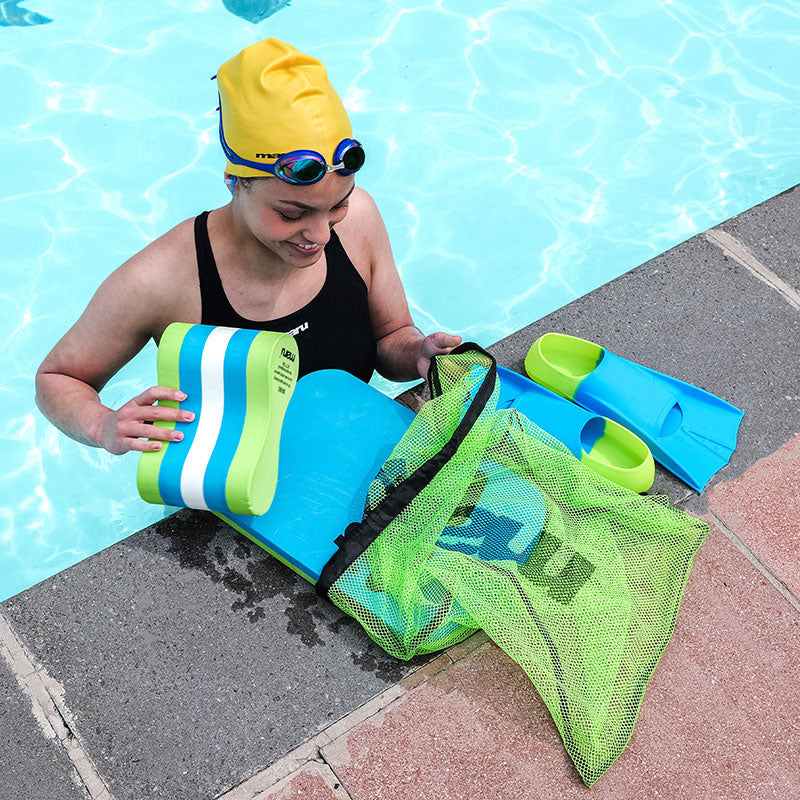

Swim Strengthening Tips: are all pull buoys the same?

No, not all pull buoys are the same. Pull buoys, used in swimming to support a swimmer’s legs and help with upper body training, vary in several ways:
1. Pull Buoys Differ by Size and Shape
Some pull buoys are larger, designed for more buoyancy, while others are smaller to challenge balance.
The traditional hourglass shape is common, but there are also rectangular or asymmetrical designs.
2. Pull Buoys Differ By Material
Most pull buoys are made from EVA foam, but the density and quality of the foam can vary, impacting comfort and buoyancy.
3. Pull Buoys Differ By Buoyancy Levels
Different pull buoys provide varying levels of buoyancy. Some offer more lift to keep the legs higher in the water, while others are designed to let your legs sink slightly to better simulate actual swimming conditions.
4. Pull Buoy Differ By Ergonomics
Higher-end pull buoys often have contoured shapes for better grip between the legs and more comfort during longer sessions.
Some even have textured surfaces to prevent slipping.
5. Pull Buoys Differ by Additional Features
Some pull buoys are dual-function and can be used as a kickboard, or they come with adjustable straps for secure fitting.
SHOP FROM OUR BEST SELLING MARU PULL BUOYS
The Best Pull Buoy For You?
The "best" pull buoy depends on your individual needs, training goals, and comfort preferences. Here's a breakdown of which types of pull buoys might be best for different swimmers:
1. For Beginners:
Larger, high-buoyancy pull buoys:
These provide more lift to the legs, helping beginners focus on upper body technique without worrying about body position. The extra buoyancy can help improve balance and streamline form.
Best for: New swimmers or those working on stroke mechanics, balance, and body positioning.
2. For Intermediate to Advanced Swimmers:
Smaller, lower-buoyancy pull buoys:
These offer less lift, encouraging swimmers to engage their core more actively to maintain body position, which simulates more realistic swimming conditions. They can help strengthen the body while swimming without heavy reliance on flotation.
Best for: Swimmers looking to fine-tune their technique, build core strength, and replicate a more natural swimming body position.
3. For Competitive Swimmers:
Contoured or ergonomic pull buoys:
Designed for comfort and performance, these pull buoys have a more refined shape that fits better between the legs. They allow for longer, more intense sessions without discomfort, helping swimmers focus on high-level technical improvements.
Best for: High-performance athletes or competitive swimmers looking for precision in stroke and technique training.
4. For Versatility:
Dual-function pull buoys:
Some pull buoys are designed to double as kickboards, offering versatility during training. They allow swimmers to quickly switch between pull and kick sets without needing separate equipment.
Best for: Swimmers who like multi-functional gear and are focused on both kick and pull sets during their training.
5. For Swimmers Focused on Core Engagement:
Smaller or asymmetrical pull buoys:
These pull buoys challenge balance and require more core engagement to maintain proper body alignment in the water. They are often used to simulate natural swimming conditions.Best for: Swimmers seeking to improve core strength and mimic real swimming body positions.
6. For Swimmers Who Want Comfort and Stability:
Textured or strapped pull buoys:
Some pull buoys feature textured surfaces or adjustable straps to help them stay securely between the legs, reducing the need for constant adjustment during training.
Best for: Swimmers who value stability and comfort during longer sessions.
